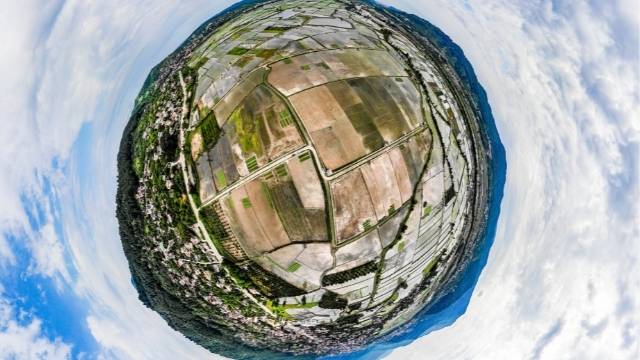When I started learning photography back in 2012, I was advised to pick a niche and develop my style. At the time I had no idea how to determine my niche or what my style should be. Instead I was experimenting with a variety of photography projects with no clear direction—I just wanted to find a way to make money using my new-found love of photography. That’s when I came across Google Street View business tours. Much like it sounds, it’s Google Street View but on the inside of a business.
I was intrigued and wondered how the tours were created. Google kept the details a closely-guarded secret, so I was overjoyed to be accepted into their exclusive training and certification program. After I produced my first 360-degree photo, I was hooked! It was only a photo of my living room, but I was in love. At last I had found my niche—the one that made me a link between taking photos and earning an income.
These days, Google no longer guards the technology, so 360-degree photography is easier than ever to learn. If you are just starting, here are a few pointers I have learned along the way:
1. Keep it level
If you want your 360-degree photos to look professional, it is important to make sure they are level. When you are choosing a tripod, get one with a built-in level. This will make the job so much easier.
2. Reduce your footprint
Most of the time when you use a tripod, you push the legs out to give maximum stability. However in 360-degree photography, it is a good practice to keep your tripod legs tucked in much closer.
You still need stability, but if you tuck them in until you can’t see them in the viewfinder, they won’t show up in your final photo. This will produce a clean, professional panorama without the headache of trying to remove them when editing.
3. Be average
Be average for the height of your panorama that is. Shooting your panoramas from approximately five feet high is the optimal eye level for tours to be viewed.
4. Less is more
Most of the time, I prefer not to have people in my panoramas. This allows the viewer to have clear sight of everything and imagine themselves there without distractions.
To control this, try to plan your photoshoot for times when there are fewer people, such as before or after hours, or at off-peak times. This makes it easier to avoid people as you take your shots and minimizes work in post-production.
5. Shoot manual
Sincepanoramic photos are a series of photos that are stitched together, leaving any of the settings up to the camera to decide will result in differences from one photo to the next. By choosing manual settings that remain constant, you can avoid changes that become noticeable when the photos get stitched together.
That covers a few technical tips. Tomorrow I will share some tips on the business side of 360-degree photography.
There is a learning curve to the skills necessary for 360-degree photography work, but the good news is that you can learn the basics over a weekend. Once you have grasped the photography side of the operation, you can work on improving the business side. Here are a few pointers to get you started:
6. Gallery
Create a website where you can display a gallery of your 360-degree photos and tours. Be sure to have it handy on your phone to show to perspective clients—there is no substitute for showing people your work firsthand. The work will speak for itself; it’s impressive and fun to show.
7. Network, network, network
Let everyone know what you are doing and ask for referrals. You never know who may offer an introduction. Join business groups, attend networking lunches, and visit your local chamber of commerce.
You can also volunteer to guest speak at a local business event. This gives you the opportunity to talk about what you do without interruption and makes you an instant local expert. I have formed wonderful friendships from my networking and still reap the benefits of contacts I met back when I first started.
8. Diversify
Offering Street View tours on Google Maps is one way to earn income from 360-degree photos, but there are also lots of other opportunities, such as real estate, hotels, tourism, and even stock photography. It helps to have multiple avenues to follow during the natural ebb and flow of different business cycles.
If you already offer photography services, don’t forget to leverage your 360 clients for cross-sell potential. Many of my 360 clients have also bought headshots, videos, product shots, and even family photos. This gives me the opportunity for variety and creativity, not to mention an extra paycheck.
9. Prepare
Do yourself a favor and prepare a checklist that you can send to clients a day or two before the shoot. This will help them show their business at its best while saving you time at the shoot. On your list remind them of things to consider like garbage cans and clutter, tidying display cases, flowers for the counter, etc. You will be surprised how many clients don’t realize that the photos will show everything, and if you don’t remind them, you will end up running around helping them prepare or waiting for them to do it.
Remind them to inform all customers about the photoshoot when they come in, so that any concerns can be dealt with upfront. You could also consider having a “Photoshoot in Progress” door sign with your company name and logo made for this purpose.
10. Get out of town
Although 360-degree photography is a perfect hometown opportunity, it doesn’t preclude travel. If you feel like a change of scenery, consider a working holiday. Last year, by lining up some business shoots in a lakeside town a few hours away, I was able to spend a couple of weeks enjoying a wonderful vacation area while spending a few


